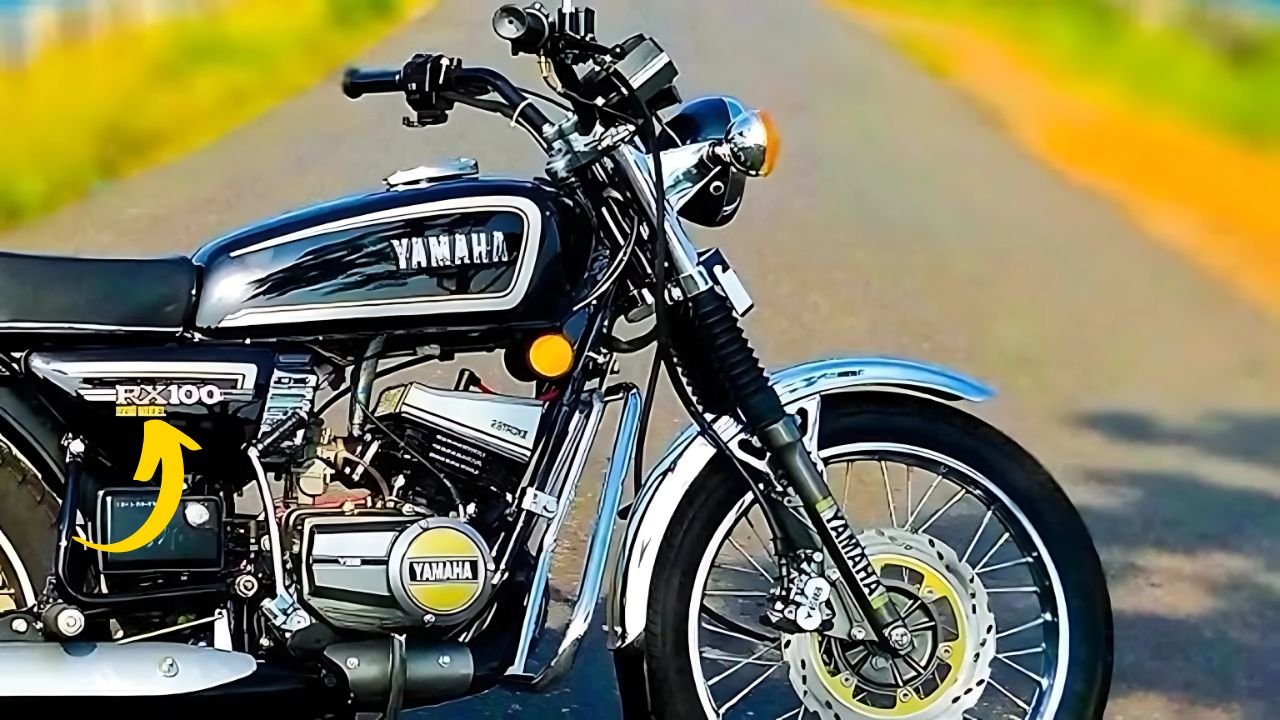Yamaha RX 100: The Indian motorcycle market is abuzz with speculation as Yamaha, the Japanese automotive giant, prepares to reintroduce its legendary RX 100. The iconic bike, which once ruled Indian roads, is expected to return with a fresh, modern twist while retaining its nostalgic essence.
Let’s explore what the new Yamaha RX 100 could bring to the table and why its comeback is one of the most anticipated in the two-wheeler industry.
Yamaha RX 100: A Legacy Revisited
Launched in 1985, the Yamaha RX 100 quickly became a cultural icon, known for its lightweight frame, thrilling acceleration, and signature exhaust note. Its presence was felt across generations, making it one of the most beloved motorcycles in India. However, due to evolving emission norms, Yamaha had to discontinue the RX 100 in 1996.
Decades later, the legacy of the RX 100 still lives on, with enthusiasts restoring old models and longing for a revival. Now, Yamaha appears ready to grant that wish, bringing back the RX 100 in an all-new avatar.
The New Yamaha RX 100: What to Expect?
Yamaha’s vision for the new RX 100 is to blend nostalgia with modern technology. Here’s what we can anticipate:
1. Design: Classic Meets Contemporary
- Retro Styling: Retaining the slender fuel tank, flat seat, and minimalist aesthetics that made the original so distinctive.
- Modern Upgrades: LED lighting, alloy wheels, and a digital-analog instrument cluster for a contemporary touch.
- New Color Variants: While the classic black with yellow stripes may return, fresh color schemes will cater to younger riders.
- Improved Comfort: Enhanced ergonomics for a more comfortable riding experience.
2. Engine: Power Meets Efficiency
The original RX 100 housed a 98cc two-stroke engine, but the new version will likely feature a more powerful and eco-friendly engine:
- Engine Displacement: Expected to range between 150cc and 200cc, ensuring a performance boost.
- Power Output: Estimated at 20-25 BHP, a significant upgrade from the original’s 11 BHP.
- Fuel Injection: Advanced fuel-injection technology to improve fuel efficiency and throttle response.
- Exhaust Sound Engineering: Efforts to recreate the original’s legendary exhaust note with a modern four-stroke setup.
- Transmission: A 5-speed gearbox for smoother rides.
3. Riding Dynamics: Keeping the Fun Factor Alive
The original RX 100 was known for its agility and lightweight nature. The new version is expected to retain these characteristics:
- Lightweight Frame: Use of modern materials to keep the weight around 120-130 kg.
- Suspension System: Telescopic forks in the front and twin shock absorbers at the rear, possibly with adjustable preload.
- Braking Setup: Front and rear disc brakes with ABS for enhanced safety.
- Tyres: Wider, high-grip tyres for improved stability and performance.
4. Features: Modern Convenience with a Retro Touch
The new RX 100 will likely embrace modern features while maintaining its classic appeal:
- Digital-Analog Instrument Cluster: A blend of traditional speedometer with digital enhancements.
- LED Lighting: Headlamps, taillights, and indicators for better visibility and aesthetics.
- USB Charging Port: To cater to today’s digitally connected riders.
- Engine Kill Switch & Side Stand Indicator: Essential safety features.
Target Audience: Who Will Ride the New RX 100?
Yamaha is positioning the RX 100 to attract a diverse audience:
- Retro Enthusiasts: Riders who have nostalgic memories of the original model.
- Young Bikers: A new generation looking for a stylish, high-performance commuter.
- Urban Riders: Those who need a nimble and fuel-efficient machine for city rides.
- Weekend Cruisers: Riders who seek a fun yet comfortable bike for leisure trips.
Pricing and Competition
- Expected Price: The new RX 100 is likely to be priced between ₹1.2 to ₹1.5 lakh, placing it in the premium commuter segment.
- Competitors: It will go head-to-head with the TVS Apache RTR 160 4V, Honda CB Hornet 160R, and Bajaj Pulsar N160.
- Special Editions: Yamaha may introduce limited edition variants to boost exclusivity.
Launch Timeline and Availability
Although official announcements are yet to be made, reports indicate:
- Production: Likely to take place at Yamaha’s state-of-the-art manufacturing plant in India.
- Launch Timeline: Possible unveiling at Auto Expo 2025, with a market launch later in the year.
- Availability: Initial focus on metro cities, followed by a gradual rollout in tier 2 and tier 3 cities.
Challenges and Opportunities for Yamaha
Challenges:
- Living Up to the Hype: The original RX 100 set high expectations.
- Regulatory Compliance: Meeting stringent BS6 Phase 2 emission norms while maintaining performance.
- Pricing Balance: Keeping it affordable while integrating modern features.
Opportunities:
- Reigniting Brand Loyalty: Yamaha can leverage the emotional connection of past RX 100 owners.
- Expanding Market Share: A competitive entry in the growing performance-commuter segment.
- Showcasing Technological Prowess: A chance for Yamaha to blend retro styling with cutting-edge technology.
Final Thoughts: Is the Yamaha RX 100 Set to Reignite Passion?
The return of the Yamaha RX 100 is not just about reviving an old name; it’s about reintroducing a legend to a new generation. If Yamaha successfully blends nostalgia with modern engineering, it could redefine the commuter and retro motorcycle segment in India.
As we wait for official confirmation, one question remains: Can the new RX 100 recapture the magic of the original? If Yamaha delivers on performance, design, and affordability, the Indian motorcycle landscape may never be the same again.
Stay tuned for more updates as we eagerly await the official launch of this modern classic!
